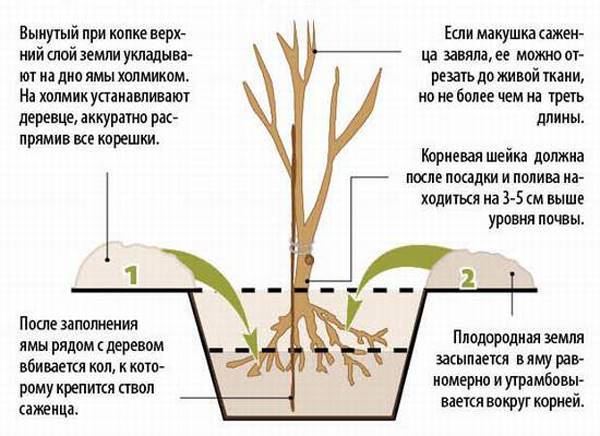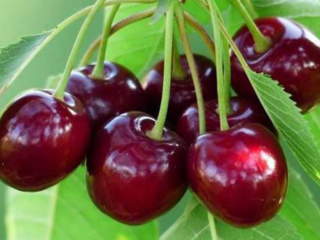Content
The quality and volume of the crop depends on the correct choice of plants for planting on the site. Molodezhnaya is one of the most popular varieties among cherry lovers. A description of the characteristics of the plant and the features of caring for it will help you avoid common mistakes and get the highest possible yield.
Breeding history
"Molodezhnaya" is a relatively young cherry variety: it was entered into the State Register only in 1993. Its breeding was carried out by the scientists of the All-Russian Institute of Selection and Technology of Horticulture and Nursery Khasan Yenikeev and Saniya Satarova. Cherry "Molodezhnaya" was obtained by crossing the varieties Lyubskaya and Vladimirskaya. The variety is recommended for the Central region of Russia and the Urals.
Description of culture
The height of an adult Molodezhnaya cherry tree is on average about 2 meters, which, in combination with the branches lowered low above the ground, simplifies harvesting. The branches can be intertwined, but usually do not break under the weight of the fruit.
The leaves of the common cherry "Molodezhnaya" have a bright green color, collected in a rounded crown of medium density. The lower part of the leaf is lighter. The bark of the Molodezhnaya cherry has a brownish brown color and darkens over time.
The inflorescence contains 3 to 7 white flowers, each about 3 cm in diameter. Due to the same height of pistils and stamens, this cherry variety is self-pollinating. Cherry blossoms "Molodezhnaya" from 10 to 20 May.
The fruits of Molodezhnaya cherries can reach 1 cm in size, the average weight of a berry is 4-5 grams. The berries are oval in shape and maroon color, dense sweet and sour pulp. Tasting assessment of the fruits of this variety is 4.5 points out of 5.
A medium-sized bone is easy to separate from the pulp. Subject to the conditions of collection and transportation and storage, berries of Molodezhnaya cherries can remain intact for up to 15–20 days.
Characteristics
Drought resistance, winter hardiness
The variety is generally characterized by high drought resistance. But immediately after planting and during fruiting, it is important to monitor soil moisture.
"Youth" is referred to as frost-resistant varieties. Flower ovaries tolerate night frosts well.
Pollination, flowering and ripening period
Features of crop pollination are of great importance when planning plantings. Up to 40% of pollination of "Molodezhnaya" occurs with its own pollen due to equal height pistils and stamens. You can also plant other cherry or cherry trees, which will additionally pollinate Molodezhnaya.
Additional pollinators for Molodezhnaya cherries:
- University;
- Nord-star;
- Lyubskaya;
- Turgenevskaya;
- and different varieties of cherries.
"Molodezhnaya" itself pollinates late cherry varieties well.
The formation of ovaries is noted even on young shoots. Flowering occurs from all buds except the topmost ones. Below is a photo of the Molodezhnaya cherry tree.
Productivity, fruiting
One Molodezhnaya cherry tree brings from 8 to 15 kg of berries per year. Productivity depends on the age of the plant. The fruits ripen in the third decade of July.
Cherry varieties "Molodezhnaya" begin to bear fruit 3-4 years after planting, continuing to yield another 15-20 years with proper care.Regular pruning of the shoots has a positive effect on yield. In its absence, only peripheral shoots bear fruit.
Scope of berries
Provided the correct collection, transportation and storage of the Molodezhnaya cherry can be successfully preserved. Storage of fruits is possible if the berries are harvested using the shearing method: cutting the berries while preserving the stalk. The integrity of the fetus will not be compromised.
The following rules will help to preserve the fruits of Molodezhnaya cherries for subsequent conservation:
- carefully select the fruits, monitor their integrity;
- do not wash the berries;
- transport and store them in ventilated containers;
- pre-treat the container with potassium permanganate and dry well;
- line the bottom of the container with paper;
- make sure that there are few fruits in the container - no more than 5 cm;
- store the berry at a temperature of + 2 + 4 ° C.
Berries of the "Molodezhnaya" variety are used for making desserts, drinks and juices, for adding to baked goods. Fruits of this variety are suitable for making jams, preserves or preserves.
Disease and pest resistance
Resistance of "Molodezhnaya" to diseases and pests is above average. Most of all, this tree is susceptible to fungal diseases.
Advantages and disadvantages
Cherry "Molodezhnaya" is one of the most reliable varieties for harvesting. Below is a comparative table of characteristics of Molodezhnaya cherries.
Advantage | Disadvantage |
Early onset of fruiting | Medium resistance to fungal infections |
Good yield (from 8 to 15 kg per tree, depending on age) | Influence of planting site selection on plant growth |
Large fruits (up to 10 mm, 4-5 g) | Reduced yield when soil is depleted |
Dessert berry taste with a high tasting rating | The need for regular pruning of overgrown shoots |
Good transportability |
|
Self-pollination of plants | |
Frost resistance, including flower ovaries | |
Drought tolerance, subject to careful care during fruiting |
Landing features
The best time to plant Molodezhnaya cherries is early spring. Planting in spring allows the seedling to take root in the best possible way.
Choosing a landing site
The best cherry varieties "Molodezhnaya" will feel in an unventilated area with good lighting. This can be the southern or southwestern part of the garden near a fence, barn, or the wall of a house. Sandy loam with an acidity of 6-6.5 pH is suitable as a soil.
For planting cherries, a pit 40 cm deep and 80 cm in diameter is prepared in 6 weeks. Organic fertilizing is applied to the bottom of the pit, or soil is dug up in the fall, adding a mixture of fresh compost and phosphorus and potassium fertilizers.
Selection and preparation of planting material
Biennial plants with a formed crown are optimal for planting in the ground. A healthy cherry seedling "Molodezhnaya" has:
- height 70-110 cm;
- roots at least 15 cm long;
- elastic and intact branches and roots;
- saturated color fresh leaves;
- intact bark.
Immediately before planting, all leaves must be removed from the seedling, damaged branches must be cut off. To prepare for planting in the ground, the roots of the seedling are treated with garden pitch or soaked in a clay mash.
Landing algorithm
When planting Molodezhnaya cherries, it is necessary to follow a simple algorithm of actions:
- in advance (at least 6 weeks), dig a hole 40 * 60 cm in size and add organic fertilizing to it;
- before planting, form a mound 10-15 cm high at the bottom of the pit;
- install a 1.3 m high peg in the center of the mound;
- install a seedling next to the peg, spreading its roots along a mound;
- check that the root collar of the plant is 3–5 cm above the level of the plot;
- fill the hole with earth, tamp it;
- form a near-stem hole with a side of the ground;
- tie up a seedling;
- water the plant abundantly;
- mulch the hole after the moisture has been absorbed.
It is important to correctly determine the location of the root collar of the seedling (the place where the roots go into the trunk). A mistake is fraught with the fact that the plant will not take root. The safest way: step back from the top root 3-4 cm up the trunk - this will be the root collar.
Essential Cherry Care Facts
Within a year after planting, the plant needs almost no additional care. Enough timely watering and loosening of the soil. Knowledge about the first signs of the development of a disease in cherries will also come in handy in order to quickly respond and save the tree.
Then you need to remember about the important features of caring for Molodezhnaya cherries, which will help increase the yield:
- timely pruning will protect against a drop in yield: when the plant is overgrown, ovaries are formed only on the outer - peripheral shoots;
- it is recommended to cut about 50 cm of the crown at the top of the tree annually;
- feeding is obligatory twice a year: in the spring with nitrogen fertilizers, in the fall - with potassium and phosphorus fertilizers;
- cherry is hygrophilous: it must be watered often;
- excess moisture can seriously harm, causing fungal infection;
- annual prevention of diseases is important: the treatment scheme is given below;
- adding compost and manure will make the plant healthier and improve its growth;
- for the winter, to protect against rodents, the root system should be covered or blocked.
How to properly prune young cherries:
Diseases and pests
The table below shows the most common diseases of Molodezhnaya cherry and how to combat them.
Disease | Signs | Prevention and treatment |
Milky shine | the leaves acquire a pearlescent color, the appearance of areas of necrosis between the veins, the wood on the cuts becomes brown | protection against mechanical damage and sunburn; treatment of bark injuries; immediate destruction of infected branches and plants. |
Moniliosis (gray rot) | Young leaves and shoots turn black and dry, rot and spores form on the fruits, accelerated spread of the disease with high humidity and cold | timely removal of rotten fruits and fallen leaves; destruction of affected shoots; treatment with a solution of Bordeaux liquid in the green cone phase (3-4%), at the end of flowering (1%), 2-3 weeks after it. In a rainy year, up to 5–6 treatments are allowed. |
Phomopsiosis | The leaves dry up and curl up in a spiral; the bark darkens, spots and cracks appear on it containing the causative agent of the disease | stripping the affected areas of the bark before the buds bloom; closure of wounds. |
Rust | Rusty brown spots on the leaves | destruction of fallen leaves; careful weeding of the intermediate host of the disease - the spindle; treatment with Bordeaux liquid at a concentration of 1% |
Coccomycosis | The leaves acquire a yellow-red color, then brown dots form on them, white-pink bulges appear on the reverse side; there is an increased shedding of foliage, freezing in winter, cracks in the bark, weakening of the kidneys. At the last stage - the bony appearance of the fruit | thorough whitewashing of trunks; treatment with Bordeaux liquid before flowering and after harvesting. |
Anthracnose | The fruits become covered with dull dots, over time - with pale pink bulges. In the late stage, the berries are mummified | treatment with fungicide Poliram before and after flowering, then after another 15 days |
Cherry trees infect pests: leafworm, sawfly, aphid, cherry weevil, shoot moth.
General rules for the preventive treatment of cherry trees from diseases and pests:
- in early spring at a temperature of 5 ° C, spraying with a solution of Bordeaux liquid (3%) and tar soap (produced in dry, calm weather);
- in the phase of the green cone, treatment with a solution of Bordeaux liquid (1%);
- in the pink bud phase, a complex solution of Horus, Decis and Zircon is used with the addition of tar soap;
- during the flowering of the Molodezhnaya cherry, treatment is carried out with a solution of boric acid (10 g per 10 l);
- 2-3 more treatments with a complex solution during the summer;
- at the end of leaf fall - 3% solution of Bordeaux liquid.
Conclusion
Gardeners highly appreciate the characteristics of Molodezhnaya cherry varieties, noting the high quality of the fruit, good yield and resistance to aggressive environmental factors. Self-pollination makes it possible to harvest even a single cherry tree in the garden. Careful and thoughtful selection of fruit tree varieties will help you get a stable harvest for many years.

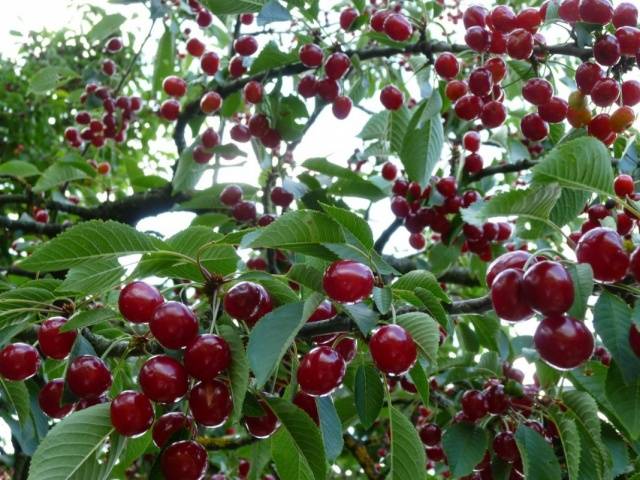
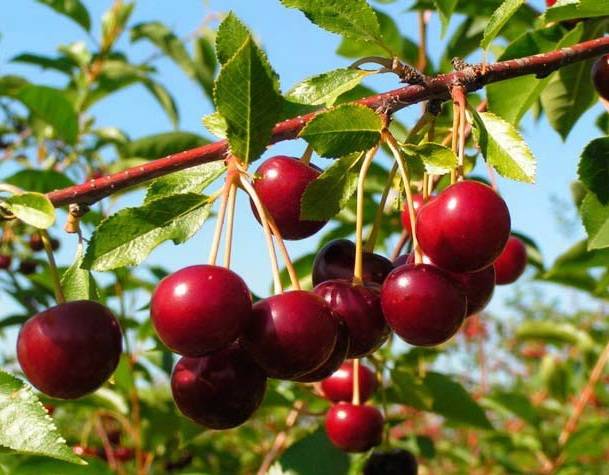
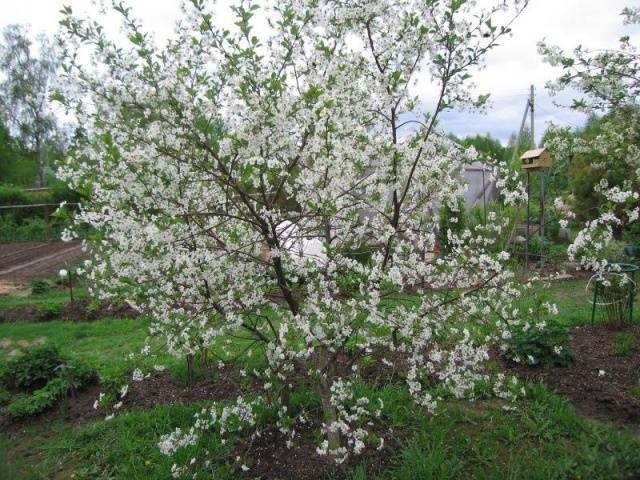
.jpg)
